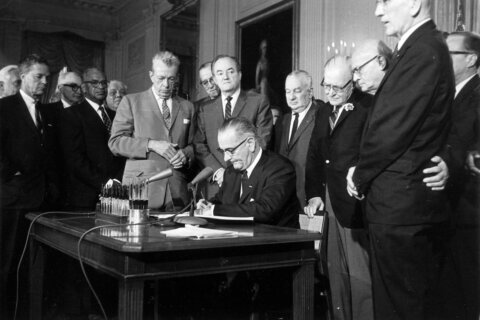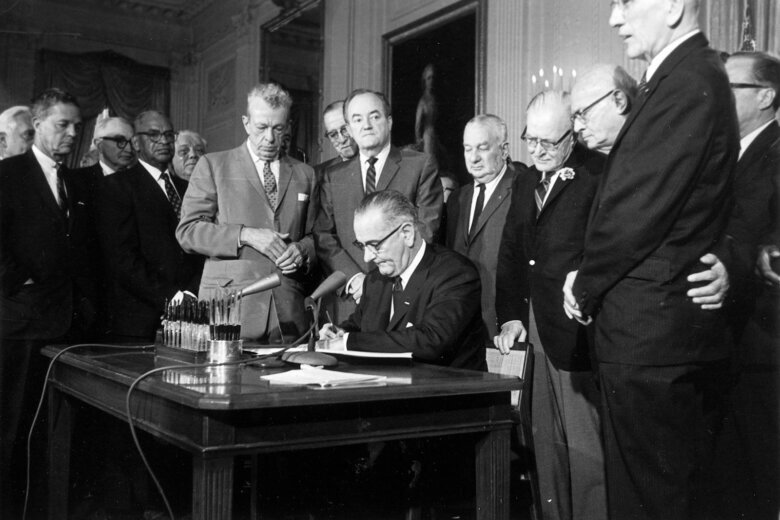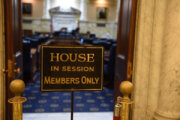
(CNN) — Diversity, equity and inclusion programs have come under attack in boardrooms, state legislatures and college campuses across the country.
Since 2023, 81 anti-DEI bills that target programs at colleges have been introduced in 28 states and in Congress, according to a tally by the Chronicle of Higher Education. Eight have been signed into law, in states like Texas and Florida.
A 2023 survey by the Pew Research Center found that 52% of employed U.S. adults say they have DEI trainings or meetings at work, and 33% say they have a designated staff member who promotes DEI.
But recently, some companies have slashed teams dedicated to DEI and wealthy corporate leaders such as Bill Ackman and Elon Musk have made posts on social media that decried diversity programs.
Critics say DEI programs are discriminatory and attempt to solve racial discrimination by disadvantaging other groups, particularly White Americans. But supporters and industry experts insist the decades-old practice has been politicized and is widely misunderstood.
What is DEI?
CNN interviewed seven DEI experts and industry leaders and asked each to define diversity, equity and inclusion. Although their responses varied slightly, most had a shared vision for what constitutes DEI:
Diversity is embracing the differences everyone brings to the table whether it’s someone’s race, age, ethnicity, religion, gender, sexual orientation, physical ability or other aspects of social identity.
Equity is treating everyone fairly and providing equal opportunities.
And inclusion is respecting everyone’s voice and creating a culture where people from all backgrounds feel encouraged to express their ideas and perspectives.
Daniel Oppong, founder of The Courage Collective, a consultancy that advises companies on DEI, said DEI was created because marginalized communities have not always had equal opportunities for jobs, or felt a sense of belonging in majority-White corporate settings.
“That is the genesis of why some of these programs exist,” he said. “It was an attempt to try to create workplaces where more or all people can thrive.”
When did workplaces start embracing DEI?
The backlash against DEI may feel like a pendulum swing from 2020, but the DEI practice has been around for decades.
Dominique Hollins, founder of the DEI consulting firm WĒ360, said the origins of DEI programs date back to the civil rights movement, which played a pivotal role in accelerating efforts to create more diverse and inclusive workplaces.
The Civil Rights Act of 1964 outlawed employment discrimination based on race, religion, sex, color and national origin. It also banned segregation in public places, like public schools and libraries.
Title VII of the Civil Rights Act established the Equal Employment Opportunity Commission (EEOC), which works to eliminate employment discrimination.
In the 1960s and ‘70s, employees began filing discrimination lawsuits with the EEOC and many companies began incorporating diversity into their business strategies by providing diversity training, according to a 2008 report published in the Academy of Management Learning & Education.
These diversity training efforts emerged around the time that affirmative action began by executive order from President John F. Kennedy. Although the two concepts may seem similar, affirmative action is different from DEI because it required federal contractors by executive order from the president to treat all applicants and employees equally based on race, color, religion and sex.
Colleges and universities also used affirmative action to boost enrollment of students of color at majority-White schools. But last year, the Supreme Court gutted affirmative action, ruling that race-conscious college admissions were unconstitutional.
After President Ronald Reagan backed corporate deregulation policies that said companies should be addressing discrimination internally in the 1980s, Hollins said some of the diversity efforts lost momentum.
In the decades to follow, Hollins said many companies continued to push for DEI-focused jobs and training in a “piecemeal” fashion, instead of creating ongoing programs and dedicated teams.
Hollins said many companies didn’t have the staffing or resources to sustain DEI efforts.
But the murder of George Floyd by Minneapolis police in May 2020 sparked a racial reckoning and a renewed push for creating DEI leadership roles and initiatives at major corporations.
Between 2019 and 2022, according to a LinkedIn analysis, chief diversity and inclusion officer roles grew by 168.9%.
Today, some of those efforts have been rolled back and people have left DEI roles because they didn’t feel fully supported, Hollins said.
Companies “were giving the appearance of commitment without actually doing the right work for that commitment to be sustainable,” Hollins said.
Despite the backlash against DEI programs and initiatives, many companies are standing firm in their support for DEI.
A survey published in January by the polling firm Ipsos, found 67% of people surveyed said their employers require or offer trainings, lectures, webinars, or resources on DEI. And 71% of people surveyed said they think DEI training is important to “creating a positive workplace culture.”
What does DEI look like at work?
Today, studies show that many companies are prioritizing some form of DEI. According to a 2023 study by the Pew Research Center, 61% of U.S. adults say their workplace has policies that focus on fairness in hiring, promotions or pay. And 56% of U.S. adults say, “focusing on increasing diversity, equity and inclusion at work is mainly a good thing.”
Kelly Baker, executive vice president and chief human resources officer at Thrivent, an organization that provides financial advice, said DEI in the workplace can be a mix of employee training, resource networks and recruiting practices.
Her company, for example, has resource groups for women in leadership, young professionals, Black employees, Hispanic employees, and military veterans, among others.
Their DEI training teaches employees how to understand and bridge cultural differences in the workplace, she said.
Thrivent also seeks job candidates with diversity in their race, geography, gender and industry background, Baker said.
Experts say many corporations tie DEI to their business strategies.
Diversity “is related to our business growth strategy,” Baker said. “It’s pragmatic and essential and critical for us to ensure that our client base reflects the world that we are in and the world that we are going to be in.”
What does DEI look like in higher education?
College campuses have become ground zero for the DEI debate as state lawmakers across the country launch efforts to halt or limit DEI programs in public schools and universities.
Last week, the University of Florida eliminated the office of its Chief Diversity Officer to comply with regulations from the Florida Board of Governors that prohibit spending state funds on DEI programs.
Ella Washington, professor of practice at Georgetown University’s McDonough School of Business, said she is concerned that efforts to ban DEI on college campuses will prevent students from being prepared for the real world.
“I think a lot of it is short-sighted and politically motivated,” Washington said. “It’s hard for me to believe that all of these lawmakers want exclusion be taught and to erase all of history.”
Washington said while DEI looks different on every college campus, many schools focus efforts on recruitment and admissions, curriculum and special programs for underrepresented students.
Georgetown’s Office of Student Equity & Inclusion oversees several DEI-centered programs including the Disability Cultural Center, Women’s Center, LGBTQ Resource Center, and the Center for Multicultural Equity and Access, according to its website.
Washington said there is also a program for first-generation college students where they have a chance to build community.
Prioritizing and embracing a diverse student body allows students to interact with peers from different walks of life and learn new perspectives even outside of the classroom, Washington said.
“Colleges are certainly a microcosm of the world,” Washington said. “So, having an experience where equity is centered, equality is considered, inclusion is at the forefront of people’s minds, those are things we are teaching the next generation about how they should be running the world.”
What are critics saying?
In recent years, DEI has become a social and political lightning rod for lawmakers, corporate leaders and even conservative activists, who have sought to cast the initiatives as unfair and even racist.
Some were emboldened by the Supreme Court’s decision to gut affirmative action last June.
Christopher Rufo, a senior fellow at the Manhattan Institute and an outspoken critic of DEI, wrote in a New York Times op-ed last year that “these are not neutral programs to increase demographic diversity; they are political programs that use taxpayer resources to advance a specific partisan orthodoxy.”
The Claremont Institute, a conservative think tank, holds a similar position. Ryan P. Williams, president of the institute, previously told CNN he believes the ideology behind DEI is “fundamentally anti-American.”
“The words that the acronym ‘DEI’ represent sound nice, but it is nothing more than affirmative action and racial preferences by a different name, a system that features racial headcounts and arbitrarily assigned roles of ‘oppressor’ and ‘oppressed’ groups in America,” Williams said in an emailed statement. “If we continue to do democracy this way, it will only end in acrimony, strife, resentment, and American collapse.”
Earlier this year, billionaire investor Bill Ackman posted a 4,000-word opus on X that criticized DEI as “inherently a racist and illegal movement in its implementation even if it purports to work on behalf of the so-called oppressed.” Ackman’s lengthy thesis was later reposted by billionaire Tesla and SpaceX CEO Elon Musk, who now owns the social media platform.
“DEI is just another word for racism. Shame on anyone who uses it,” Musk wrote in his post.
In a follow-up post, Musk doubled down, adding, “DEI, because it discriminates on the basis of race, gender and many other factors, is not merely immoral, it is also illegal.”
Tesla, which is owned by Musk, has since omitted all language regarding minority workers and outreach to minority communities in its 10-K filing with the SEC made January 29, CNN previously reported.
But not every business leader agrees. Mark Cuban, billionaire businessman and minority owner of the Dallas Mavericks, pushed back on Musk’s posts in a thread defending DEI as good for businesses and their workers.
“The loss of DEI-Phobic companies is my gain,” Cuban wrote. “Having a workforce that is diverse and representative of your stakeholders is good for business.”
What’s next in the fight over DEI?
Texas, North Dakota, North Carolina, Tennessee and Utah each have at least one anti-DEI bill that has been signed into law, according to the Chronicle of Higher Education.
In Nebraska, Republican State Sen. Dave Murman proposed a bill in January that would prohibit state colleges and universities from dedicating public money and staff time to DEI efforts.
The bill is currently with the Nebraska legislature’s education committee which will decide whether to move it to the full legislature.
Murman’s office did not respond to a request for an interview.
Nebraska Democratic state Sen. Danielle Conrad told CNN she opposes the bill in part because the broader effort to ban DEI has become “divisive.” She said it also “distracts from the real issues” colleges are facing, such as families who can’t afford tuition.
DEI, she said, is valuable to colleges and universities.
“We absolutely know from common sense and research that when we have more diverse perspectives in discussion or as part of our education, it helps us to have more thoughtful results,” Conrad said. “It helps us to be more well-rounded, active and engaged citizens.”
CNN’s Athena Jones contributed to this story.
The-CNN-Wire
™ & © 2024 Cable News Network, Inc., a Warner Bros. Discovery Company. All rights reserved.








